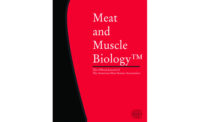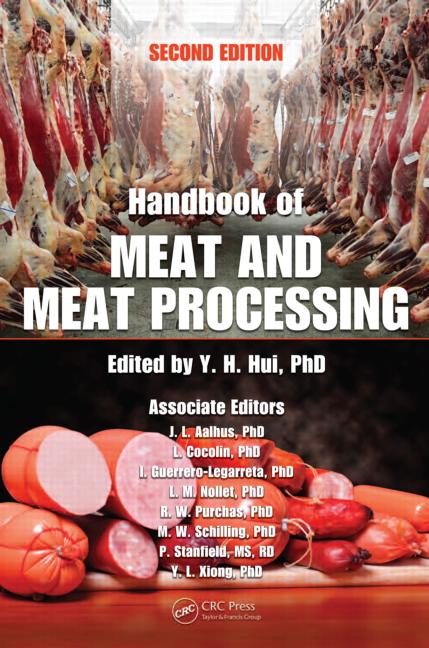AMSA Meat and Muscle Biology Journal

What if you had a resource to connect you to the top meat scientists researching areas that impact meat production worldwide? What if you could preview the work they do? What if it was freely accessible? What if you could see how others are using the scientific information published in a journal?
That is precisely the type of resource the journal Meat and Muscle Biology is (https://www.iastatedigitalpress.com/mmb/). Meat and Muscle Biology is the official journal publication of the American Meat Science Association (AMSA). It is a fully open-access, peer-reviewed scientific journal. Anyone with an internet connection can access the articles the moment they are published – for free. AMSA started Meat and Muscle Biology in the fall of 2016. The first issue was published in 2017. Currently, the journal is in its fifth issue and is going strong.
Meat and Muscle Biology was started as a source to publish a broader scope of peer-reviewed articles than was available at the time. The journal focuses on edible products from commonly farmed and/or harvested meat animal species. The journal considers articles that address topics concerning meat from domestic mammals, avian species, aquaculture species, amphibians, wild capture mammals, synthetic meat analogs, and cell-based meat. The scope of topics ranges from production, processing, composition, quality, safety, and value of edible products. The topics include muscle biology and biochemistry, human nutrition, food safety, sensory evaluation, consumer science, meat analytical procedures, and marketing meat products. The journal’s goal is to provide peer-reviewed scientific research information. Collectively, works published in the journal have immediate practical application and advance the knowledge of muscle biology and food science to support future food applications.
The journal publishes primary research articles and high-quality review papers – both in the regular issues and its proceedings issues. Last summer, AMSA hosted the International Congress of Meat Science and Technology (ICoMST). This meeting represents the top meat scientists from around the world. AMSA Meat and Muscle Biology is proud to be the publisher of the peer-reviewed review papers generated from that meeting. Those papers can be found at https://www.iastatedigitalpress.com/mmb/issue/341/info/.This collection of articles is an excellent source of information on a vast array of topics. This year, the journal is finalizing the special issue that will contain peer-reviewed review articles from the 2021 Reciprocal Meat Conference.
Also published in the journal is the Meat Science Lexicon. The lexicon is a comprehensive source of standardized terms in the meat industry and allied fields, culinary arts, journalists, health professionals, nutritionists, regulatory authorities, and among consumers. The lexicon was developed by a broad array of scientists and was peer-reviewed. This resource is invaluable to anyone interested in meat or meat products. Interested readers can access the lexicon by going to the journal website or to https://doi.org/10.22175/mmb2017.12.0059.
There have been some significant new developments in the journal. First, the journal has expanded its editorial board to represent the worldwide meat science community. Leading international meat scientists who represent all of the major scientific areas of meat science assist in curating the content of the journal.
A second exciting development is that the journal has several ways to interact with it. There are now social media options to help keep up with the articles that are being published. The journal has a LinkedIn page and a Twitter feed. Both social media outlets help you stay abreast of the latest, cutting-edge research published in the journal. Follow the Meat and Muscle Biology LinkedIn page and Twitter feed (@MMBJournal). You can learn more about the newest scientific information published in the journal and participate in the discussion about meat science.
Another development for the journal is its use of an independent, third-party application that tracks mentions of Meat and Muscle Biology articles. This application tracks article usage in industry publications, government publications and documents, Twitter mentions, and blogs, to name a few. This service is called Altmetric (https://www.altmetric.com/about-altmetrics/). It provides authors an independent assessment of how their work is being used beyond being cited in other research articles. Altmetric is a powerful tool to document how industry, government, and other practitioners use the work. Altmetric scores can be a powerful indicator of the impact of the work in the field. Each article has an Altmetric “donut” on its webpage that gives a score based on how many mentions an article is getting. Mentions are times the article is discussed and referenced using the URL or the article’s digital object identifier (doi) of the article (the doi is found in the citing information for the article in reference lists and on the articles web page for the journal). Clicking on the donut will provide more information, including where (worldwide) the article is being used/discussed. Conversations about the article on Twitter will also be shown on this page. Documenting an article’s usage in trade journals, industry magazines, government documents, etc., can also indicate how the more extensive community views and uses the work. Altmetric is an example of a tool that Meat and Muscle Biology uses that benefits both author and readers.
Meat and Muscle Biology is part of a new era in publishing for AMSA. It is part of AMSA’s mission to provide high-quality, unbiased scientific information to the industry. Authors and readers find the journal offers new ways to explore and discuss cutting-edge science related to meat and meat products.
Looking for a reprint of this article?
From high-res PDFs to custom plaques, order your copy today!








